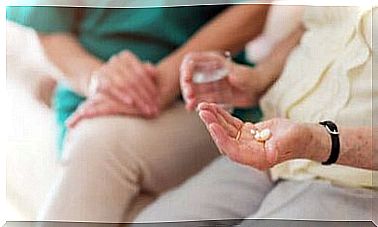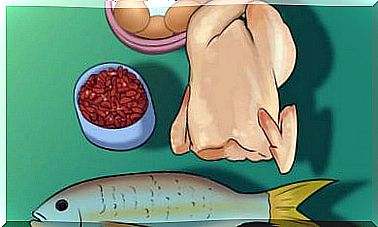Why Do We Have Blood In Our Eyes?
The flow of blood in the eyes is the result of too much strain on our heart. They are often the result of a blow that repressed us or affected us from within.

In this article, we are going to explain to you why some people frequently suffer from blood flow in the eyes and how they can prevent it naturally.
It is possible that you had a discharge of blood in your eyes and it was gone after a few days, but some people have it frequently.
The flow of blood and the heart
Bleeding from the eyes can be related to the heart, especially if it always occurs in the left eye. It does not matter but it must be taken into account because it reflects too much effort that the heart has had to face in a difficult situation.
It can be as a result of an argument, violent exercise, etc. So, whenever this happens, we have to ask ourselves what happened in the previous days.
We do not always know where they come from because often the hemorrhages are the result of a blow that we have suppressed and which has affected us internally.
Often times, people who are bleeding are seemingly serene and peaceful people. But who suffer from difficult situations in silence.
About the heart …
The heart is a vital organ which, like the rest of the body, has emotions and pain.
According to traditional Chinese medicine, the hours for regenerating functions are between 11 a.m. and 1 p.m. It is a time slot during which, if we are at risk of suffering from heart problems, we should not put in great effort.
Moreover, although it seems symbolic, the heart is also linked to love and to couple and family relationships. He therefore suffers the impact of all the traumas we experience, from the death of a loved one to the breakup of love.
Prevention of blood flow in the eyes
If you want to prevent blood flow in your eyes, you need to take care of your heart function.
These remedies can be applied only if one does not suffer from heart disease. Or if you are not taking medical treatment, in which case you will have to seek the advice of a doctor first.
Here are some tips for taking care of a healthy heart:
- Always sleep on your back or on your right side. Avoid sleeping on your left side as it is a position that compresses the heart.
- Your diet should be vegetarian whenever possible. Because it is the best food for the heart. The most harmful are red meat, cold meats, saturated fat, salt, carbonated drinks etc.
- Avoid exciting bad habits like tobacco or alcohol.
- Be aware of the influence of negative emotions like hatred, which have an influence on heart health. You can help yourself with therapies such as homeopathy or Bach flowers.
- Cold showers are very healthy. You can alternate between cold and hot water and gradually move towards cold.
Draw a course on your body and wet the heart area last.
The white hawthorn cure
If you are afraid of suffering from an ocular hemorrhage, because you have already felt the sensations that precede it or because you have experienced something that causes it, you can do a course of white hawthorn for 5 days.
This medicinal plant has vasodilator properties, helps the heart to pump blood and relaxes our nervous system in the face of stressful situations, among other things.
Its virtues for coronary health have been known and used since Antiquity. In addition, it improves blood circulation in the body in general. This helps prevent and heal blood flow in the eyes.
During the bleeding, it is also possible to wash your face with cold water, always with your eyes closed, several times a day. With this simple tip, you will relieve your eyesight and your heart.









